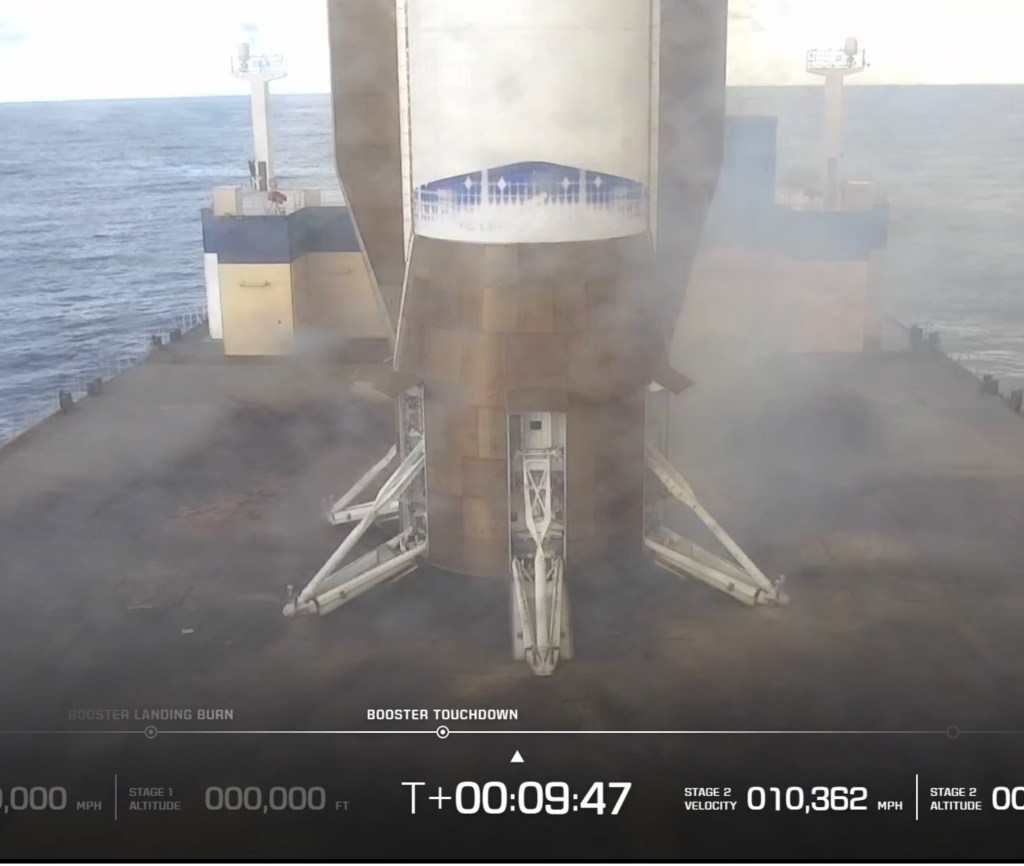Blue Origin’s New Glenn Achieves Milestone with Successful Booster Landing and NASA Payload Deployment
On November 13, 2025, Blue Origin, the aerospace company founded by Jeff Bezos, marked a significant achievement in space exploration. The company’s New Glenn rocket successfully launched from Cape Canaveral Space Force Station in Florida, carrying NASA’s twin Mars orbiters, part of the ESCAPADE mission. This event not only demonstrated Blue Origin’s growing capabilities but also underscored its potential to compete in the commercial space industry.
Launch Details and Mission Objectives
The New Glenn rocket, standing at 321 feet tall, lifted off at approximately 3:55 p.m. Eastern Time. This mission was particularly noteworthy as it was the second flight of the New Glenn and the first to carry a commercial payload. The primary objective was to deploy NASA’s ESCAPADE (Escape and Plasma Acceleration and Dynamics Explorers) spacecraft. These twin orbiters are designed to study the interaction between solar winds and Mars’s magnetic field, providing insights into atmospheric loss and radiation conditions on the Red Planet. Such data is crucial for future human exploration missions to Mars.
Overcoming Challenges
The path to this successful launch was not without obstacles. Initially scheduled for earlier in the week, the launch faced delays due to adverse weather conditions and intense solar storms. These solar events raised concerns about heightened radiation levels, which could potentially impact the spacecraft’s electronics. NASA, prioritizing the safety and success of the mission, decided to postpone the launch until conditions improved. This cautious approach ensured that the mission proceeded without compromising the integrity of the payload.
Booster Landing: A Leap Towards Reusability
A highlight of this mission was the successful landing of New Glenn’s first-stage booster on a drone ship named Jacklyn in the Atlantic Ocean. This achievement marked Blue Origin’s first successful booster recovery, a critical step towards the company’s goal of developing reusable rocket technology. The ability to recover and reuse rocket components is essential for reducing the costs associated with space travel and increasing the frequency of launches. This milestone places Blue Origin alongside other industry leaders who have demonstrated similar capabilities.
Technical Specifications of New Glenn
The New Glenn rocket is a heavy-lift launch vehicle designed to carry substantial payloads into space. Its first stage is powered by seven BE-4 engines, collectively generating over 3.8 million pounds of thrust. This immense power allows New Glenn to transport larger payloads compared to many existing rockets. The rocket’s design emphasizes reusability, with the first stage built to withstand multiple missions, thereby enhancing cost-effectiveness and operational efficiency.
Implications for the Space Industry
The success of this mission has significant implications for the broader space industry. Blue Origin’s demonstrated ability to launch and recover a heavy-lift rocket positions it as a formidable competitor in the commercial space sector. This development is particularly relevant as the demand for satellite launches, interplanetary missions, and potential lunar expeditions continues to grow. The competition among private aerospace companies is likely to drive innovation, reduce costs, and expand access to space.
Future Prospects
Looking ahead, Blue Origin has ambitious plans. The company aims to increase the frequency of New Glenn launches, further refine its reusable technology, and expand its portfolio of missions. Collaborations with organizations like NASA are expected to continue, with potential projects including lunar landings and deep-space exploration missions. The successful deployment of the ESCAPADE mission serves as a testament to Blue Origin’s capabilities and its commitment to advancing space exploration.
Industry Reactions
The aerospace community has taken note of Blue Origin’s achievements. Competitors and collaborators alike recognize the significance of the successful booster landing and payload deployment. Such milestones not only validate Blue Origin’s technological advancements but also contribute to the collective progress of the space industry. The shared goal of expanding humanity’s presence in space benefits from each company’s successes, fostering a spirit of collaboration and healthy competition.
Conclusion
Blue Origin’s recent accomplishments with the New Glenn rocket represent a pivotal moment in the company’s journey and the broader narrative of private space exploration. By successfully launching a NASA payload and achieving a booster landing, Blue Origin has demonstrated its readiness to play a significant role in the future of space travel. As the company continues to innovate and expand its capabilities, the possibilities for exploration and discovery seem boundless.



